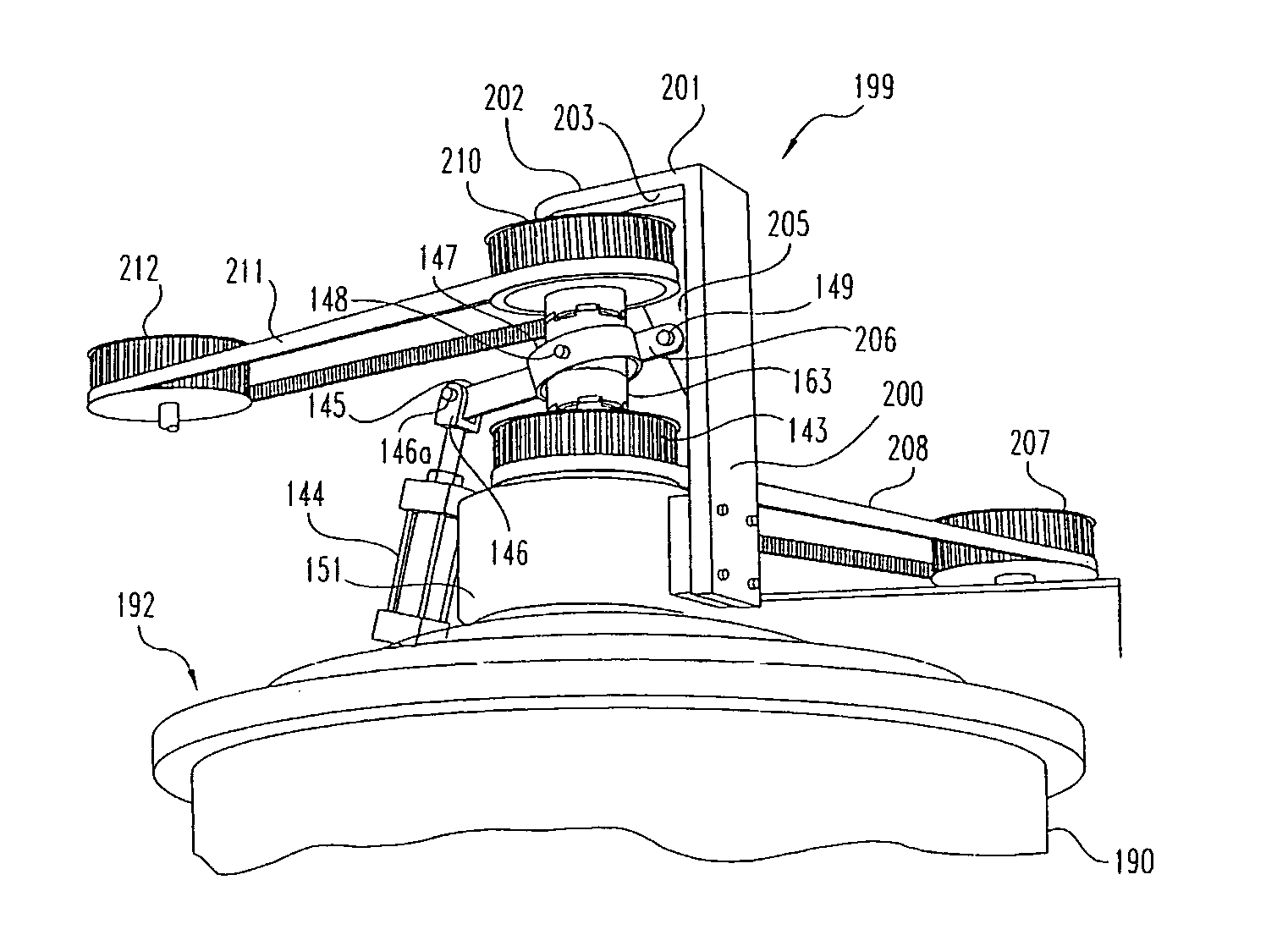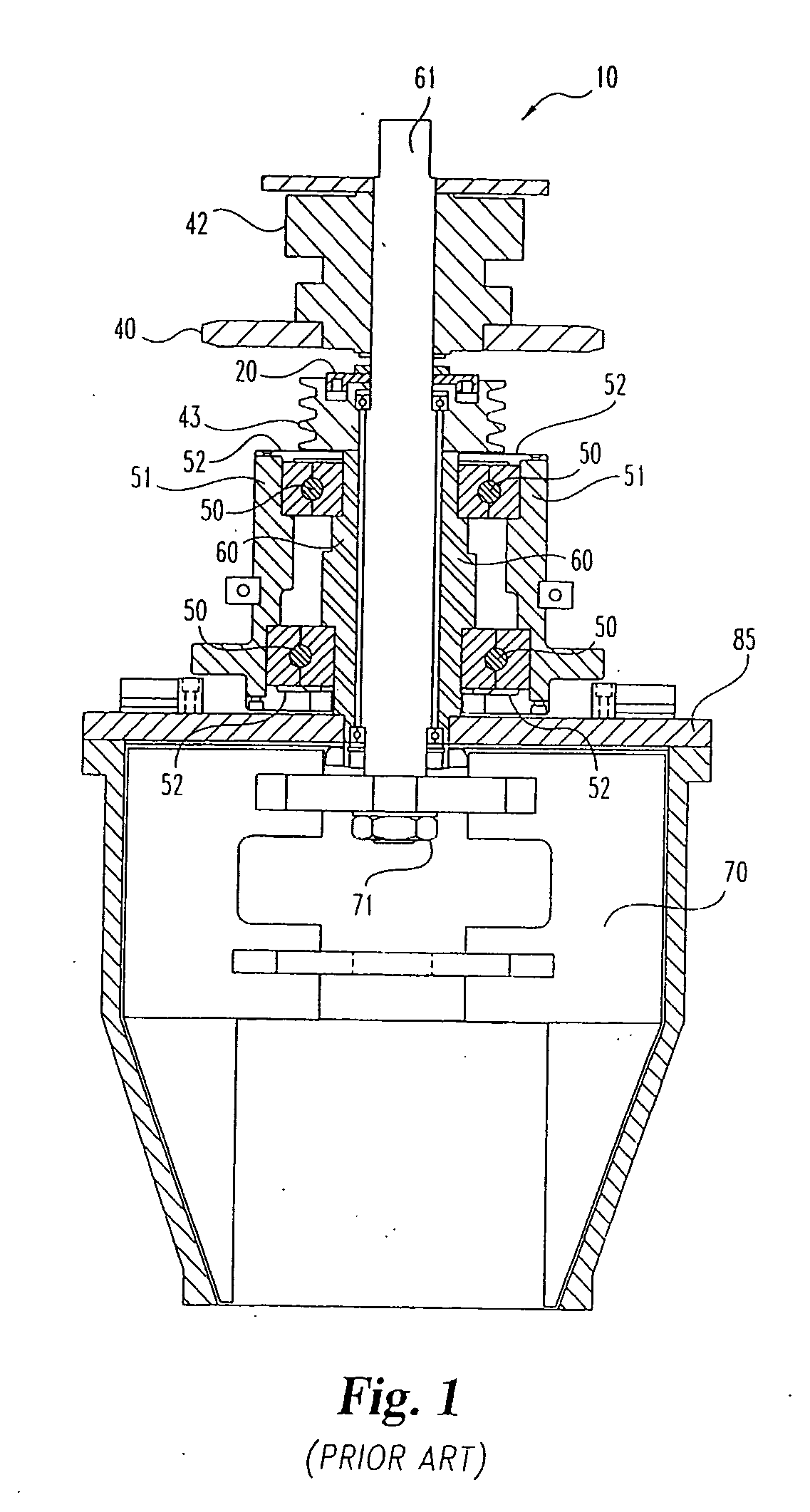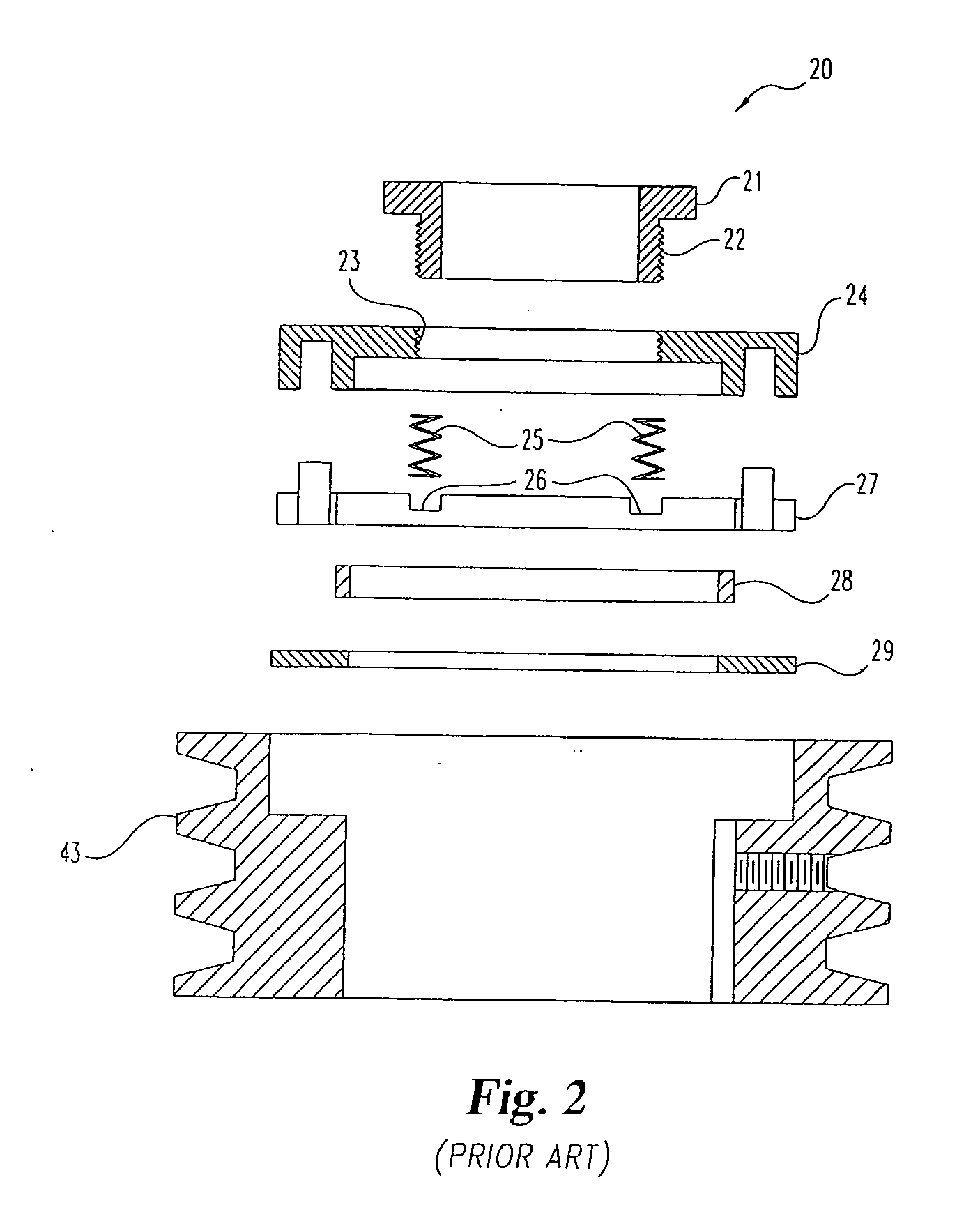Centrifuge with clutch mechanism for synchronous blade and bowl rotation
a clutch mechanism and centrifuge technology, applied in centrifuges and other directions, can solve the problems of clogging filter paper or cartridges, generating immense labor costs or waste streams that may be greater, and requiring disposal, so as to achieve the effect of reducing the entrainment of gas
- Summary
- Abstract
- Description
- Claims
- Application Information
AI Technical Summary
Benefits of technology
Problems solved by technology
Method used
Image
Examples
Embodiment Construction
[0032] For the purposes of promoting an understanding of the principles of the invention, reference will now be made to the embodiments illustrated in the drawings and specific language will be used to describe the same. It will nevertheless be understood that no limitation of the scope of the invention is thereby intended, any alterations and further modifications in the illustrated device, and any further applications of the principles of the invention as illustrated therein being contemplated as would normally occur to one skilled in the art to which the invention relates.
[0033] In order to more fully illustrate the advantages of the present invention, the device of the prior art will be described. With reference to FIGS. 1 and 2, a prior art centrifugal separator with a frictional mechanism to ensure synchronous bowl and blade rotation is illustrated. A portion of the prior art assembly 10 is shown in FIG. 1 with more detail of the frictional clutch assembly 20 shown in FIG. 2....
PUM
 Login to View More
Login to View More Abstract
Description
Claims
Application Information
 Login to View More
Login to View More - R&D
- Intellectual Property
- Life Sciences
- Materials
- Tech Scout
- Unparalleled Data Quality
- Higher Quality Content
- 60% Fewer Hallucinations
Browse by: Latest US Patents, China's latest patents, Technical Efficacy Thesaurus, Application Domain, Technology Topic, Popular Technical Reports.
© 2025 PatSnap. All rights reserved.Legal|Privacy policy|Modern Slavery Act Transparency Statement|Sitemap|About US| Contact US: help@patsnap.com



